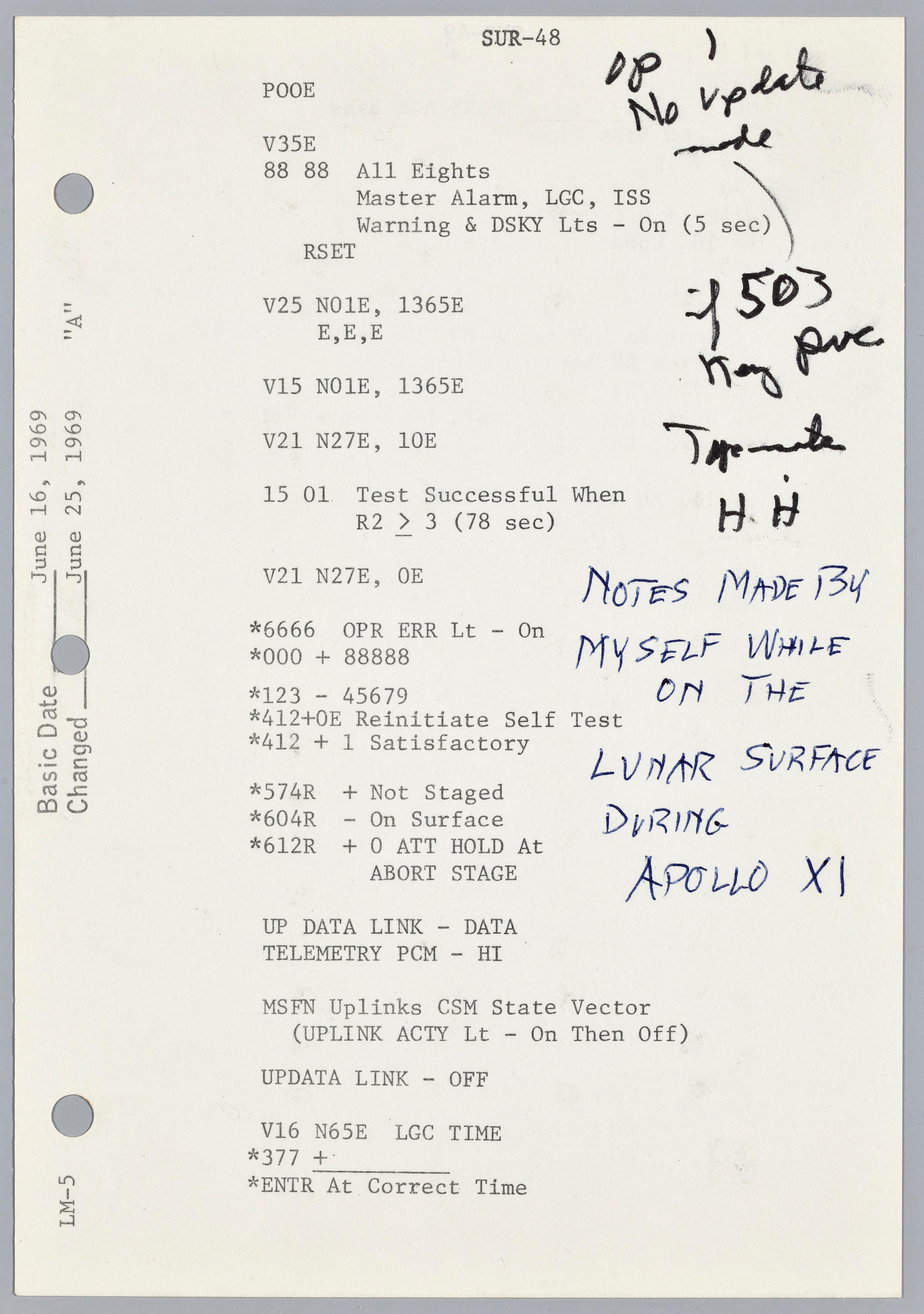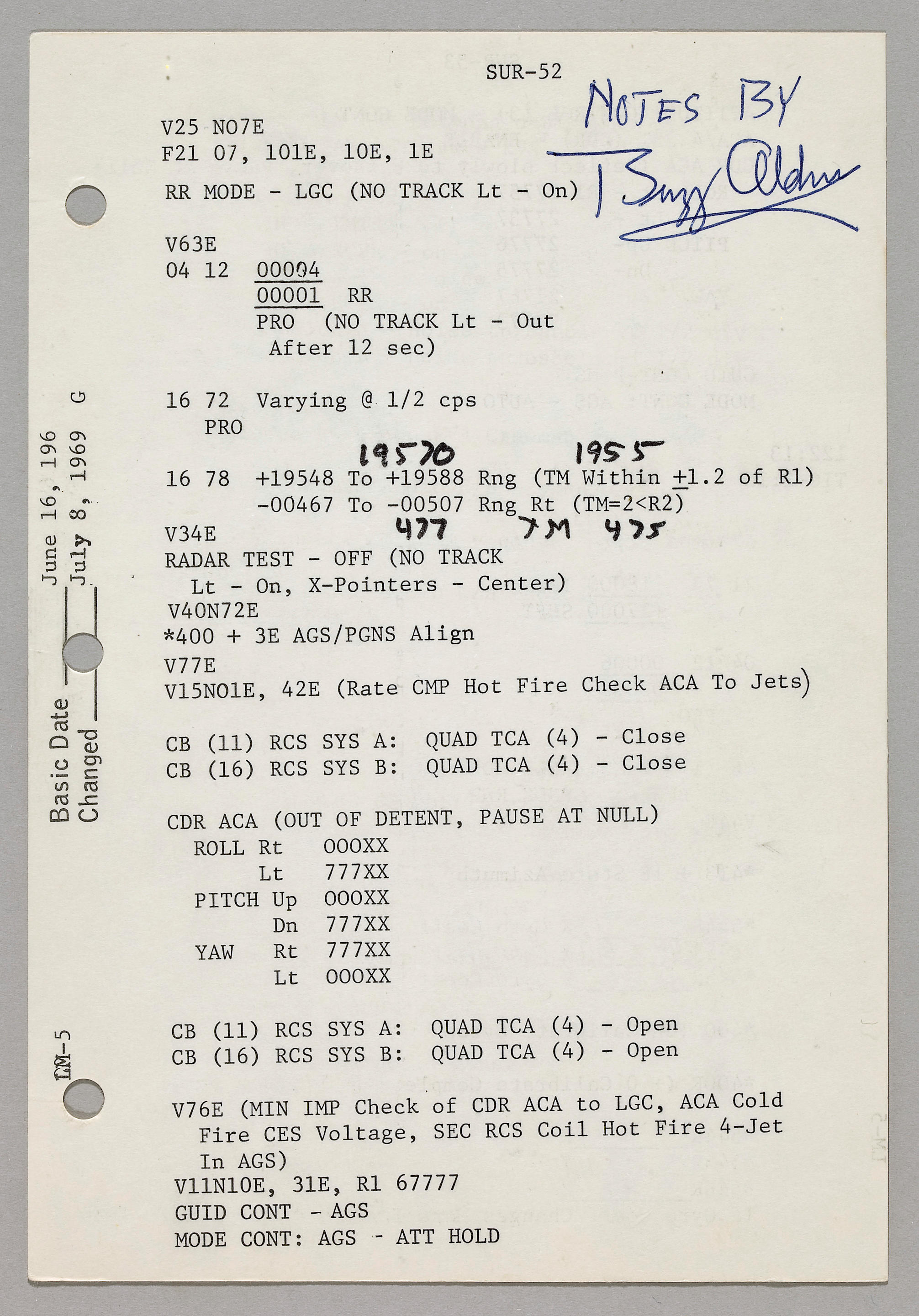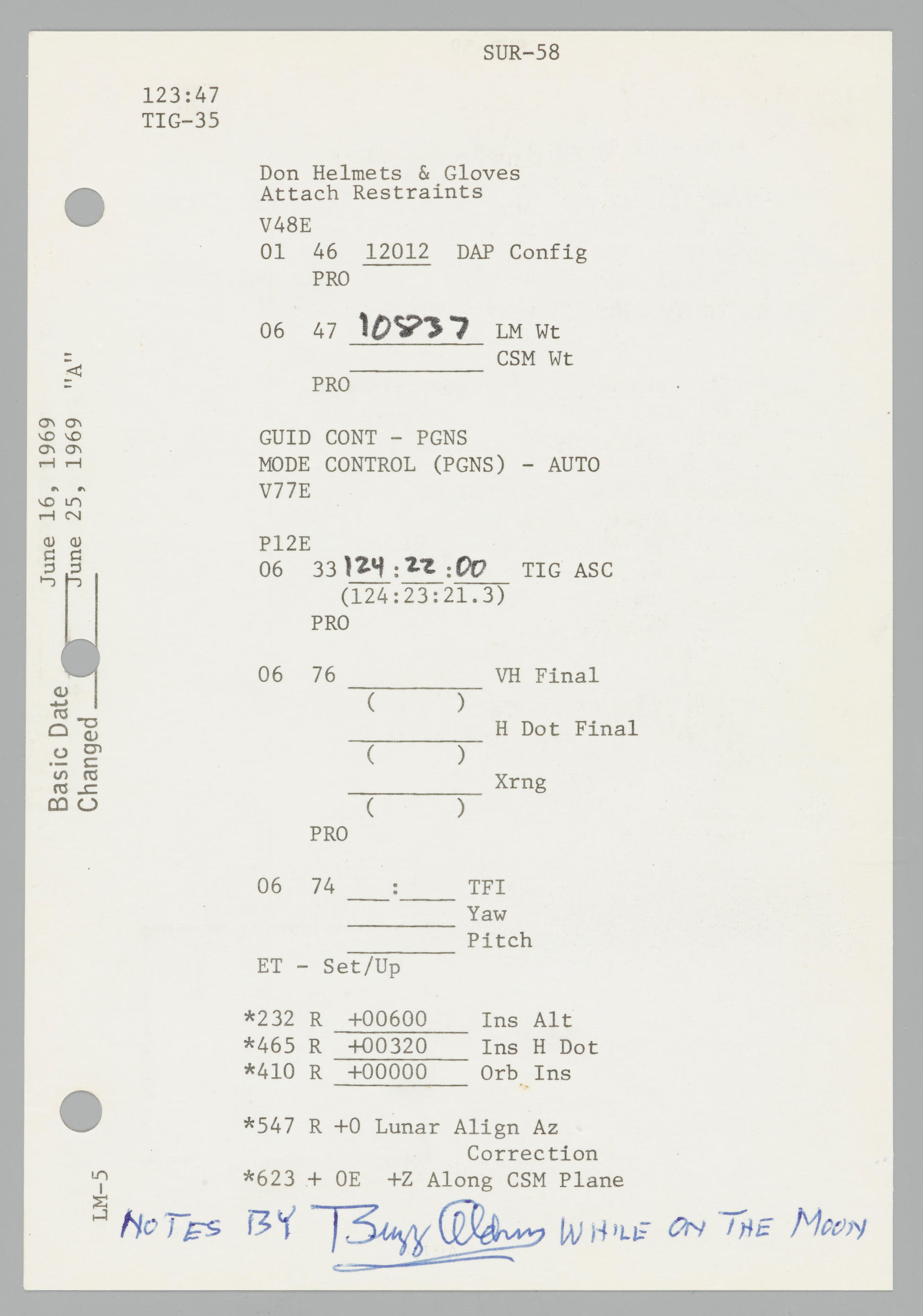FLOWN ACA (Attitude Controller Assembly) from Lunar Module Falcon, the device contained within an 11 by 9½ by 5 inch wooden display case. The upper part is mounted flush at the top of the case, and comprises a 5 inch tall hand grip with a flexible boot base on a 6¾ by 4 inch top plate. Two 16½ inch long electrical connectors protrude from the top plate. The ACA mechanism is contained in a 3¾ by 6¾ by 5 inch metal housing, set within the wooden case. The top of the case bears a metal plaque reading: “LMP Hand Controller from Falcon, Apollo 15. July 26-Aug. 2, 1971.” An actual piece of flight control equipment which assisted the landing of the first extended-duration lunar exploration flight of the Apollo Program. The ACA allowed the astronaut to input pitch, roll, and yaw maneuvers by moving the hand grip forward and backward, side to side, or with a twisting action. These commands activated the four sets of four 100-pound Marquardt rocket engines mounted on the outside of the Ascent Stage at four equally distant points. When the ACA was engaged in the semi-automatic mode, an impulse proportional to the amount of hand grip movement was routed to the LM Guidance Computer (LGC). The LGC used this impulse to perform steering calculations and generated the rocket engine thrust-on commands. When the ACA was allowed to return to its neutral position after the maneuver, then the LGC maintained current attitude. Each LM crew member had an ACA available for use as part of the overall safety redundancy design of the Lunar Module. The ACA was located at the right hand side of each crew member’s flight station, just below the main control panel. The ACAs would be used during undocking from the Command Module prior to the lunar landing, setting and maintaining the proper attitude during the long engine burn to make the lunar landing, attitude control during the ascent from the lunar surface, and during rendezvous and re-docking phases with the Command Module. Apollo 15 was the first of the NASA defined “J-series” lunar landing missions that employed the use of the lunar rover. This allowed the lunar landing crew to make three extend lunar surface explorations which lasted approximately 7 hours each. Accompanied by a Typed Letter Signed by Mrs. James Irwin It reads in part: “This Attitude Controller Assembly (ACA) was used by my late husband, Astronaut James Irwin during the flight of Apollo 15. The assembly provided the direct means for the Apollo 15 astronauts to perform attitude control maneuvers with Lunar Module 'Falcon.' The assembly was on the lunar surface inside 'Falcon' for over 66 hours. Jim removed this device after he left the lunar surface and just before the Apollo 15 crew released the Ascent Stage of 'Falcon' while in lunar orbit. This stage was then made to crash into the lunar surface. That created a simulated moonquake for the instruments Jim and other Apollo crews left on the lunar surface.”
FLOWN ACA (Attitude Controller Assembly) from Lunar Module Falcon, the device contained within an 11 by 9½ by 5 inch wooden display case. The upper part is mounted flush at the top of the case, and comprises a 5 inch tall hand grip with a flexible boot base on a 6¾ by 4 inch top plate. Two 16½ inch long electrical connectors protrude from the top plate. The ACA mechanism is contained in a 3¾ by 6¾ by 5 inch metal housing, set within the wooden case. The top of the case bears a metal plaque reading: “LMP Hand Controller from Falcon, Apollo 15. July 26-Aug. 2, 1971.” An actual piece of flight control equipment which assisted the landing of the first extended-duration lunar exploration flight of the Apollo Program. The ACA allowed the astronaut to input pitch, roll, and yaw maneuvers by moving the hand grip forward and backward, side to side, or with a twisting action. These commands activated the four sets of four 100-pound Marquardt rocket engines mounted on the outside of the Ascent Stage at four equally distant points. When the ACA was engaged in the semi-automatic mode, an impulse proportional to the amount of hand grip movement was routed to the LM Guidance Computer (LGC). The LGC used this impulse to perform steering calculations and generated the rocket engine thrust-on commands. When the ACA was allowed to return to its neutral position after the maneuver, then the LGC maintained current attitude. Each LM crew member had an ACA available for use as part of the overall safety redundancy design of the Lunar Module. The ACA was located at the right hand side of each crew member’s flight station, just below the main control panel. The ACAs would be used during undocking from the Command Module prior to the lunar landing, setting and maintaining the proper attitude during the long engine burn to make the lunar landing, attitude control during the ascent from the lunar surface, and during rendezvous and re-docking phases with the Command Module. Apollo 15 was the first of the NASA defined “J-series” lunar landing missions that employed the use of the lunar rover. This allowed the lunar landing crew to make three extend lunar surface explorations which lasted approximately 7 hours each. Accompanied by a Typed Letter Signed by Mrs. James Irwin It reads in part: “This Attitude Controller Assembly (ACA) was used by my late husband, Astronaut James Irwin during the flight of Apollo 15. The assembly provided the direct means for the Apollo 15 astronauts to perform attitude control maneuvers with Lunar Module 'Falcon.' The assembly was on the lunar surface inside 'Falcon' for over 66 hours. Jim removed this device after he left the lunar surface and just before the Apollo 15 crew released the Ascent Stage of 'Falcon' while in lunar orbit. This stage was then made to crash into the lunar surface. That created a simulated moonquake for the instruments Jim and other Apollo crews left on the lunar surface.”









/96396/Internet%20Image%201.jpg)




.jpg)
Try LotSearch and its premium features for 7 days - without any costs!
Be notified automatically about new items in upcoming auctions.
Create an alert